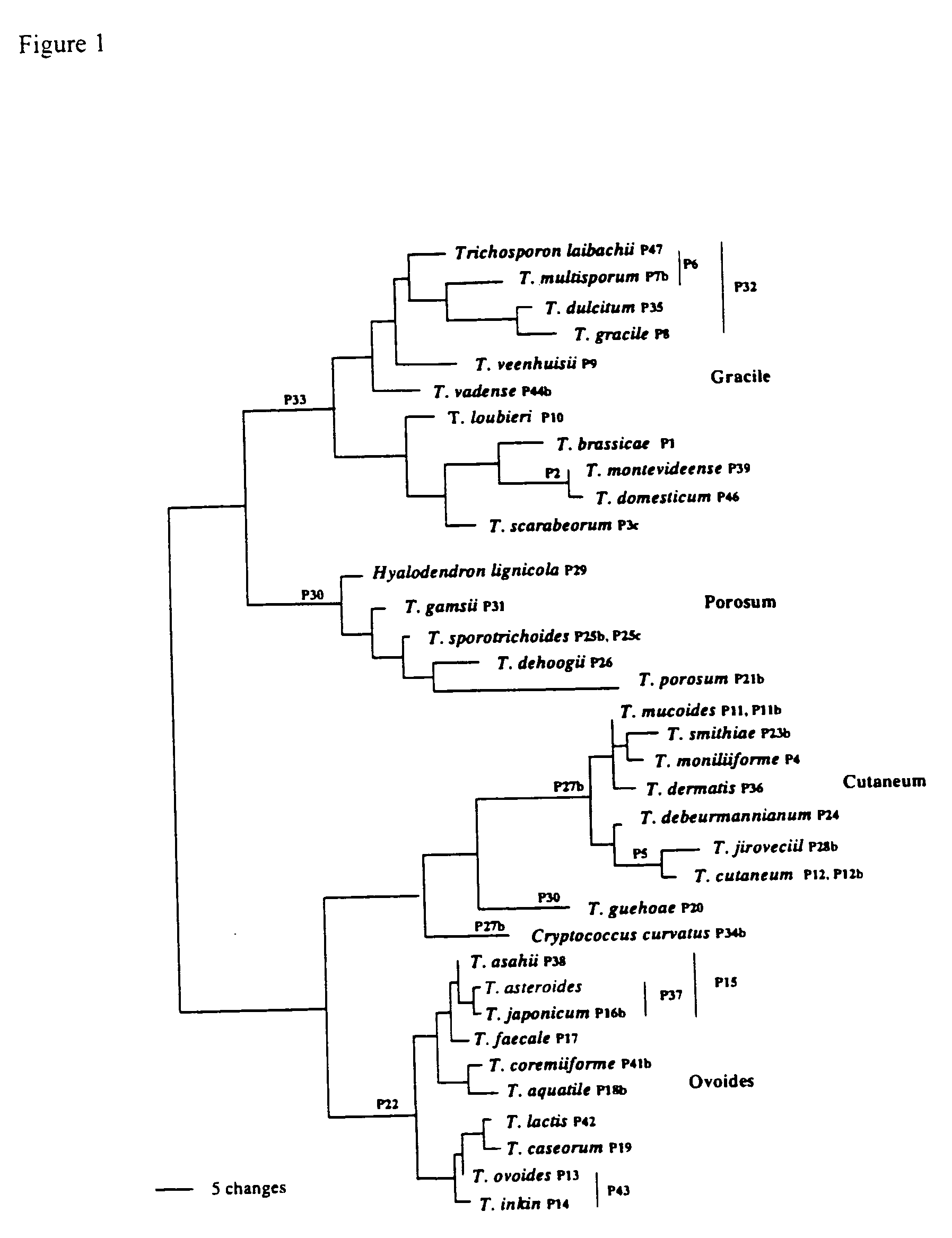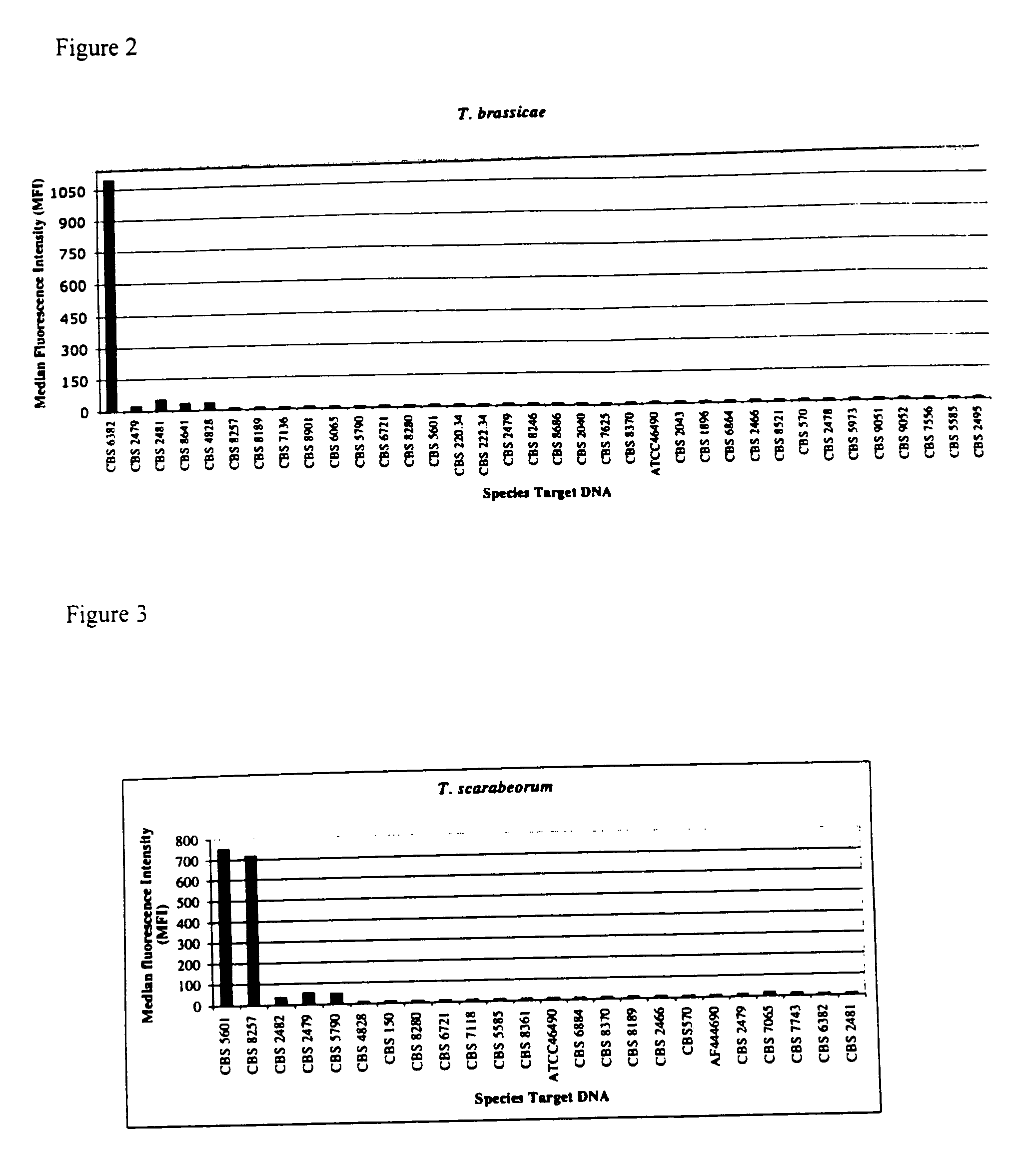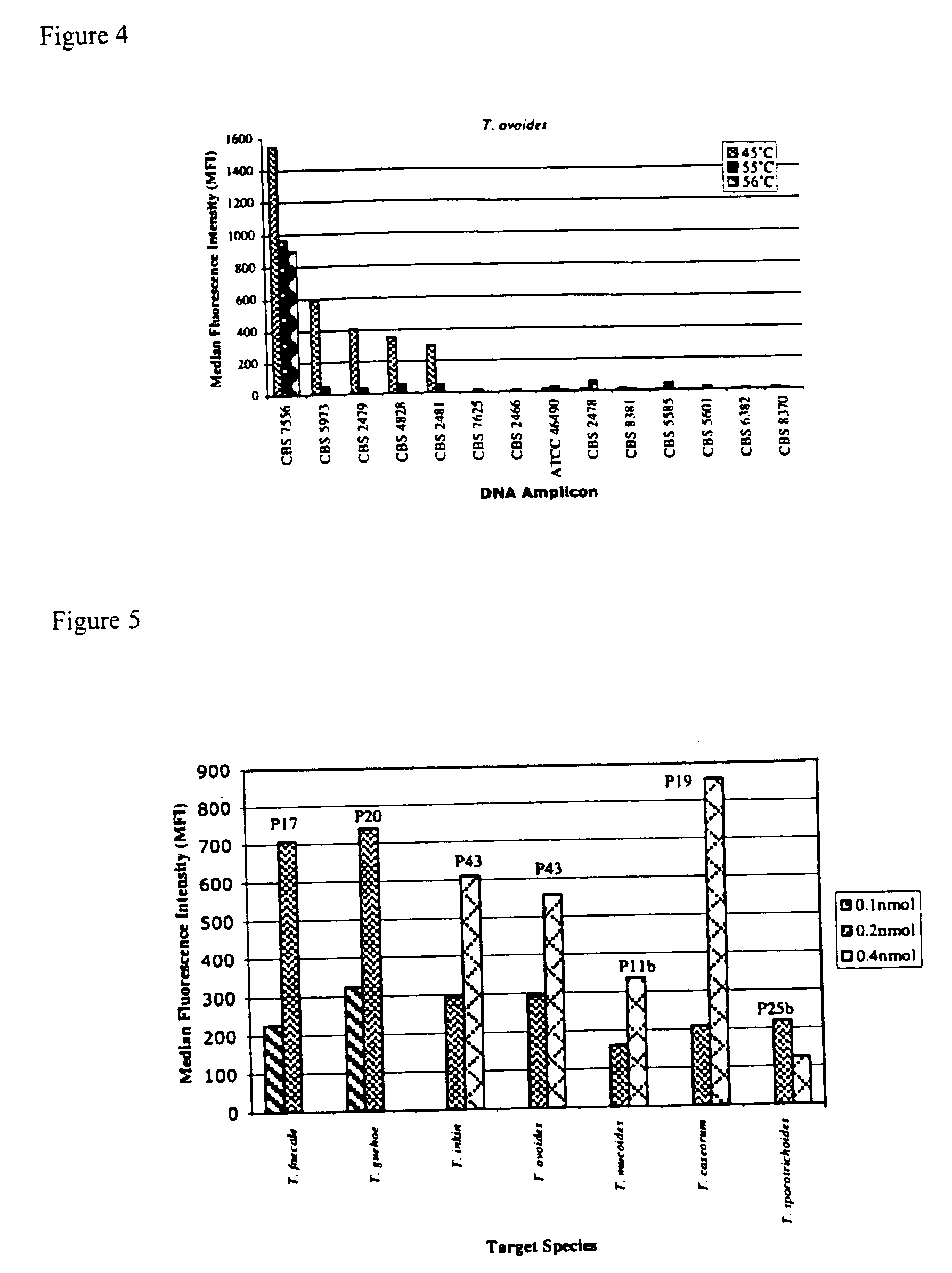High through-put detection of pathogenic yeasts in the genus trichosporon
a pathogenic yeast and high throughput technology, applied in the field of species-specific nucleic acid probes, can solve the problems of poor patient prognosis, time-consuming and inaccurate phenotypic characteristics, and inability to provide accurate resolution
- Summary
- Abstract
- Description
- Claims
- Application Information
AI Technical Summary
Benefits of technology
Problems solved by technology
Method used
Image
Examples
Embodiment Construction
Materials and Methods
Strains and DNA Isolation
[0030] The examined strains (Table 1) were obtained from Centraaalbureau voor Schimmelcultures (CBS), Utrecht, The Netherlands; Portuguese Yeast Culture Collection (PYCC) and American Type Culture Collection (ATCC).
TABLE 1List of strains studied.Trichosporon aquatileCBS 5973 TTrichosporon asahiiCBS 2479 TTrichosporon asahiiCBS 8640Trichosporon asteroidsCBS 2481 TTrichosporon brassicaeCBS 6382 TTrichosporon caseorumCBS 9052 TTrichosporon cutaneumCBS 2466 TTrichosporon coremiiformeCBS 2482 TTrichosporon coremiiformeCBS 2478Trichosporon dehoogiiCBS 8686 TTrichosporon debeurmannianumCBS 1896 TTrichosporon dermatisCBS 2043 TTrichosporon dermatisCBS 8381Trichosporon domesticumCBS 8280 TTrichosporon domesticumCBS 8111Trichosporon dulcitumCBS 8257 TTrichosporon faecaleCBS 4828 TTrichosporon gamsiiCBS 8245 TTrichosporon gracileCBS 8189 TTrichosporon gracileCBS 8518Trichosporon gracileCBS 8519Trichosporon guehoaeCBS 8521 TTrichosporon inkinCB...
PUM
| Property | Measurement | Unit |
|---|---|---|
| Nanoscale particle size | aaaaa | aaaaa |
| Nanoscale particle size | aaaaa | aaaaa |
| Wavelength | aaaaa | aaaaa |
Abstract
Description
Claims
Application Information
 Login to View More
Login to View More - R&D
- Intellectual Property
- Life Sciences
- Materials
- Tech Scout
- Unparalleled Data Quality
- Higher Quality Content
- 60% Fewer Hallucinations
Browse by: Latest US Patents, China's latest patents, Technical Efficacy Thesaurus, Application Domain, Technology Topic, Popular Technical Reports.
© 2025 PatSnap. All rights reserved.Legal|Privacy policy|Modern Slavery Act Transparency Statement|Sitemap|About US| Contact US: help@patsnap.com



